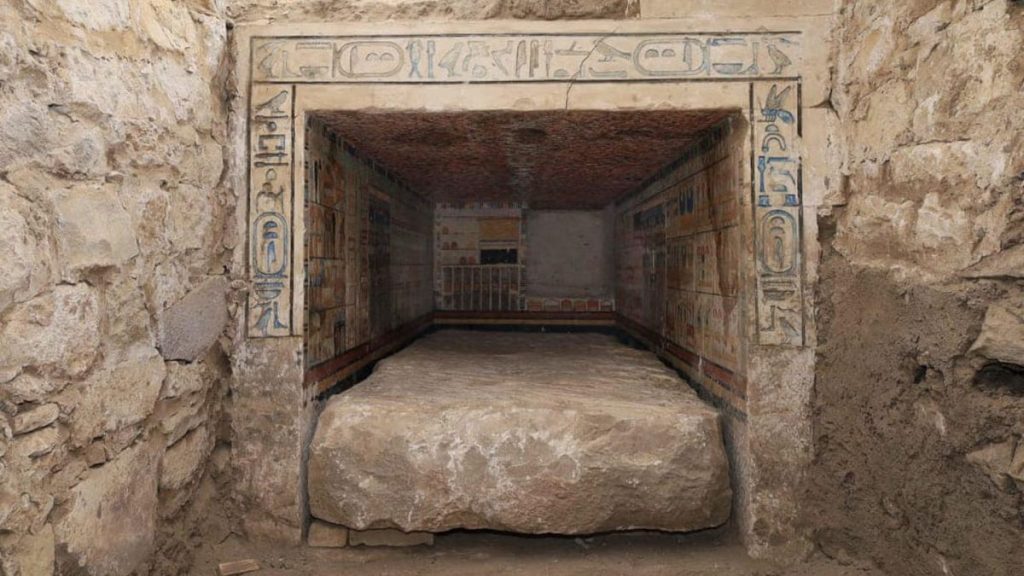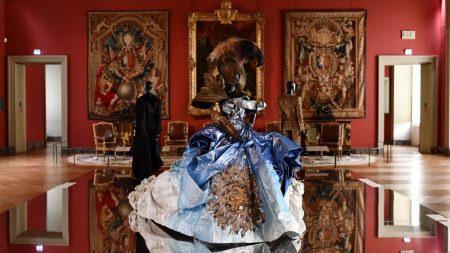The sands of Saqqara, a sprawling necropolis south of Cairo and a silent testament to ancient Egypt’s grandeur, have once again yielded a remarkable secret. A joint French-Swiss archaeological team, diligently excavating the site since 2022, unearthed the tomb of Tetinebefou, a prominent figure who served during the reign of Pepi II of the Sixth Dynasty, approximately 4,000 years ago. While the tomb itself had been plundered in antiquity, leaving no skeletal remains, the inscriptions adorning its walls spoke volumes about the life and multifaceted roles of this ancient Egyptian dignitary. They revealed a man of impressive stature, a multi-talented individual who navigated the complex spheres of medicine, religion, and royal service, holding the titles of chief physician, priest, magician, and even royal dentist.
Tetinebefou’s primary role, as gleaned from the inscriptions, was that of a chief physician within the royal palace. This position placed him at the heart of the pharaoh’s court, entrusted with the health and well-being of the ruling elite. His medical expertise likely encompassed a wide range of practices, from herbal remedies and surgical procedures to magical incantations and rituals believed to ward off illness and promote healing. In addition to his medical duties, Tetinebefou served as a priest and magician of Serket, the goddess of healing, magic, and protection against venomous creatures, particularly scorpions and snakes. This role suggests a specialization in treating venomous bites and stings, a common threat in ancient Egypt.
What makes Tetinebefou’s case particularly intriguing is his designation as a royal dentist, a title rarely encountered in archaeological discoveries from this period. While dentistry was practiced in ancient Egypt, as evidenced by archaeological findings of tooth extractions and primitive dental prosthetics, the specific role of a royal dentist points to a specialized and perhaps highly valued position within the pharaoh’s court. This discovery sheds further light on the sophistication of medical practices in ancient Egypt, highlighting the development of specialized roles within the broader field of healing.
The tomb itself, though unfortunately plundered, still bears witness to the artistic and architectural conventions of the Old Kingdom. The surviving artwork, including a vibrantly painted false door and scenes depicting funerary offerings, offers a glimpse into the elaborate rituals and beliefs surrounding death and the afterlife in ancient Egypt. The false door, a common feature in Old Kingdom tombs, served as a symbolic portal between the world of the living and the realm of the dead, allowing the deceased’s spirit to receive offerings and communicate with the living. The scenes of funerary offerings depict the rituals performed to sustain the deceased in the afterlife, ensuring their continued existence in the realm beyond.
Saqqara, a UNESCO World Heritage site, stands as a vast necropolis, a city of the dead, where generations of Egyptians, from pharaohs to high-ranking officials and commoners, were laid to rest. The site encompasses a remarkable collection of pyramids, including the iconic Giza Pyramids, as well as smaller pyramids at Abu Sir, Dahshur, and Abu Ruwaysh. Saqqara’s significance lies not only in its monumental architecture but also in the wealth of information it provides about ancient Egyptian society, culture, and beliefs. Each tomb unearthed within this sprawling necropolis adds a new layer to our understanding of this fascinating civilization.
The discovery of Tetinebefou’s tomb, despite its plundered state, represents a significant contribution to our knowledge of ancient Egyptian medicine, religion, and courtly life. It underscores the multifaceted roles individuals could occupy within the hierarchical structure of ancient Egyptian society, highlighting the interconnectedness of medicine, religion, and magic. Tetinebefou’s story, pieced together from the inscriptions on his tomb walls, offers a captivating glimpse into the life of a remarkable individual who served the pharaohs over four millennia ago, a testament to the enduring legacy of ancient Egypt. This discovery further solidifies Saqqara’s reputation as a treasure trove of archaeological wonders, a place where the sands of time continue to reveal the secrets of a civilization that continues to captivate the world.














